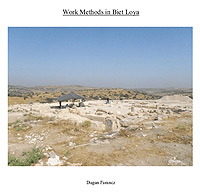|
|
 |
Students works

| An Introductory Guide to Pottery Conservation: From Excavation to Preservation, January 2014
|

| Akko Aqueduct Pipes Building Technique, January 2014
|

| Technical conservation plan for an architectural detail in the Khan El Faranj, January 2014
|

| How to Write about Architectural Conservation: the Publication in Peer-Reviewed Journals, January 2014
|

| Field report of work in Biet Loya, 2012
|

| On the road to Zion, 2012
|

| Grouting for Caesar: The Vault Complex and High Level Aqueduct at Caesarea After 20 Years, 2012
|

| A Vision for Khan esh-Shawarda, 2012
|

| Documentation of the floor of the main hall, 2nd Story, The International Conservation Center, Citta' di Roma, 2011
|

| The Work on Two Column Bases at the ICC Building, Old Akko, 2011
|

| Exhibiting the Objects of the International Conservation Centre (ICC), 2011
|

| A Catalog for the Aegean Wares excavated by Dr. Edna J.Stern in 2009: A Directory for the Archives of the Israel Antiquities Authority, 2011
|

| Presenting the Hammam al-Pasha: Conserving Heritage by Creating an Attraction, 2011
|

| Typology of British Mandate Period Residential Buildings in New City Akko 2010
|

| Documentation report of BURJ EL-KASHLA, Old City of Akko 2011
|

| Acre, Sabil Al- Jazzar, January 2010
|

| Acre, Sadirvan Al-Jazzar, July 2010
|

| Contents of British Mandate Archeological Inspection Files Archive, 2010
|

| Documenting Akko’s Metalwork, 2009
|

| Historic Mortars and their durability, in the Old City of Akko, 2010
|

| Historical Documentation of the Water Cisterns under the Jazzar Pasha Mosque in Acre, 2010
|

| Revitalization of Weizman Street, 2010
|

| The International Conservation Center in Acre, Historic Assessment. 2007
|

| The Ottoman Water Distribution System in Acre, 2009
|

| The Wall that Stopped Napoleon, 2010
|
Work methods in Biet Loya, June 2012
Dagan Amadeus Farancz
|
This report is on three of the work methodologies employed on the mosaic floor located in situ at Beit loya. The work is separated into three methods. The first deals with the small losses that were filled with cement upon initial excavation of the site. The second deals with the fill around located around the edge of the main space where is connects with a wall. The third methods deals
with replacing the stratigraphy of large lacunas in the forward section of the church. The work is conducted by a medium sized crew from the mosaic conservation workshop of the Israel Antiquities Authority. Due to the location of te site and the conditions on site there are certain logistical issues that have to be taken into consideration when work is being conducted on the site. The site is only accessible one day a week and for only half the day. All the work materials must be taken too and from the site each work day and there is no water supply on site.
|
|
|
|
|










